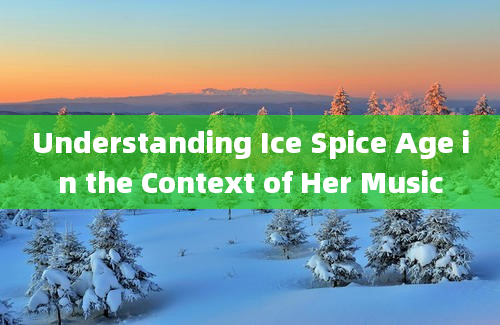The Science of Earth's Age: What It Means for Our Future

The age of the Earth is a fundamental aspect of our understanding of the planet's history and its future prospects. According to the United States Geological Survey (USGS), the Earth is approximately 4.5 billion years old. This estimation is derived from various scientific methods, including radiometric dating of meteorites and Earth's oldest rocks, as well as the study of the isotopic composition of lead in ancient minerals.
Radiometric Dating: The Cornerstone of Earth's Age Determination
Radiometric dating is a technique used to determine the age of materials by measuring the decay of radioactive isotopes. One of the most reliable methods is uraniumlead dating, which has been instrumental in establishing the Earth's age. The process involves measuring the ratio of uranium to lead in zircon crystals, some of which are over 4 billion years old. According to a study published in the journal Science (available [here](https://www.sciencemag.org/news/2014/02/worldsoldestrockformationrevealsearlyearthwasalreadycomplex)), these findings provide robust evidence for the Earth's ancient origins.
Implications for Our Future
Understanding the Earth's age has profound implications for our future. It allows scientists to reconstruct the planet's geological history, including the formation of continents, the evolution of life, and the occurrence of major climatic events. This knowledge is crucial for predicting future geological and climatic changes.
For instance, the Geological Society of America (GSA) highlights that studying the Earth's past climate can help us understand current climate change trends and their potential impacts. A comprehensive review published in Geology (accessible [here](https://www.geosociety.org/gsa/pubs/journals/gsabull/abstracts/2018/GSABG351A.1.htm)) underscores the importance of ancient climate data in forecasting future climatic shifts.
The Role of Technology and Innovation
Advancements in technology have significantly enhanced our ability to determine the Earth's age and understand its history. Techniques such as mass spectrometry and laser ablation have improved the precision of radiometric dating. The Smithsonian Institution provides an insightful overview of these technologies and their applications in geochronology (read more [here](https://naturalhistory.si.edu/earth/text/2.2.1.html)).
Conclusion
The science of Earth's age is not just an academic pursuit; it has practical implications for our future. By understanding the planet's past, we can make more informed decisions about resource management, environmental conservation, and preparing for natural disasters. As we continue to explore and learn, the knowledge of Earth's ancient history will remain a cornerstone of scientific inquiry and a guide for our future actions.
Frequently Asked Questions (FAQs)
1. Q: How old is the Earth according to scientific research?
A: Scientific research, including radiometric dating of meteorites and ancient rocks, estimates the Earth to be approximately 4.5 billion years old. This is supported by studies from the USGS and other geological research institutions.
2. Q: What is radiometric dating?
A: Radiometric dating is a technique used to determine the age of materials by measuring the decay of radioactive isotopes within them. It is a key method for establishing the age of the Earth and various geological formations.
3. Q: How does uraniumlead dating help in determining the Earth's age?
A: Uraniumlead dating measures the ratio of uranium to lead in zircon crystals. Since uranium decays into lead at a known rate, this ratio can be used to calculate the age of the crystals, providing evidence for the Earth's age.
4. Q: Why is knowing the Earth's age important for understanding climate change?
A: Understanding the Earth's age allows scientists to reconstruct past climate conditions. This historical data is crucial for predicting future climate trends and understanding the impacts of current climate change.
5. Q: What role do zircon crystals play in determining the Earth's age?
A: Zircon crystals are used in uraniumlead dating due to their durability and resistance to weathering. They often contain uranium and lead, making them ideal for radiometric age determination.
6. Q: How have technological advancements improved our understanding of the Earth's age?
A: Technologies like mass spectrometry and laser ablation have enhanced the precision of radiometric dating, allowing for more accurate age determinations of geological materials.
7. Q: Can the Earth's age help in predicting natural disasters?
A: Yes, understanding the Earth's geological history can help in identifying patterns and trends that may indicate the likelihood of future natural disasters, such as earthquakes and volcanic eruptions.
8. Q: What are some of the oldest known rocks on Earth?
A: Some of the oldest known rocks on Earth are found in the Acasta Gneiss Complex in Canada and the Jack Hills in Australia, with ages exceeding 4 billion years.
9. Q: How does the Earth's age affect resource management?
A: Knowledge of the Earth's age and geological history helps in understanding the formation and distribution of natural resources, aiding in their sustainable management.
10. Q: Where can I find more information about the Earth's age and related scientific research?
A: You can find more information from reputable sources such as the USGS ([here](https://www.usgs.gov/)), the Geological Society of America ([here](https://www.geosociety.org/)), and the Smithsonian Institution ([here](https://naturalhistory.si.edu/)).
By addressing these questions, we hope to provide a clearer understanding of the significance of Earth's age and its implications for our future.










